 Project Syndicate is an organisation which produces articles on a range of economic, political and social topics written by eminent scholars, political and business leaders, policymakers and civic activists. It then makes these available to news media in more than 150 countries. Here we look at four such articles which assess the outlook for the European and global economies and even that of capitalism itself.
Project Syndicate is an organisation which produces articles on a range of economic, political and social topics written by eminent scholars, political and business leaders, policymakers and civic activists. It then makes these available to news media in more than 150 countries. Here we look at four such articles which assess the outlook for the European and global economies and even that of capitalism itself.
The general tone is one of pessimism. Despite unconventional monetary policies, such as quantitative easing (QE) and negative nominal interest rates, the global recovery is anaemic. As the Nouriel Roubini articles states:
Unconventional monetary policies – entrenched now for almost a decade – have themselves become conventional. And, in view of persistent lacklustre growth and deflation risk in most advanced economies, monetary policymakers will have to continue their lonely fight with a new set of ‘unconventional unconventional’ monetary policies.
Perhaps this will involve supplying additional money directly to consumers and/or business in a so-called ‘helicopter drop’ of money. Perhaps it will be supplying money directly to governments to finance infrastructure projects – a policy dubbed ‘people’s quantitative easing‘. Perhaps it will involve taxing the holding of cash by banks to encourage them to lend.
 The Hans-Werner Sinn article looks at some of the consequences of the huge amount of money created through QE and continuing to be created in the eurozone. Although it has not boosted consumption and investment nearly as much as desired, it has caused bubbles in various asset markets. For example, the property market has soared in many countries:
The Hans-Werner Sinn article looks at some of the consequences of the huge amount of money created through QE and continuing to be created in the eurozone. Although it has not boosted consumption and investment nearly as much as desired, it has caused bubbles in various asset markets. For example, the property market has soared in many countries:
Property markets in Austria, Germany, and Luxembourg have practically exploded throughout the crisis, as a result of banks chasing borrowers with offers of loans at near-zero interest rates, regardless of their creditworthiness.
The German property boom could be reined in with an appropriate jump in interest rates. But, given the ECB’s apparent determination to head in the opposite direction, the bubble will only grow. If it bursts, the effects could be dire for the euro.
The Jean Pisani-Ferry article widens the analysis of the eurozone’s problems. Like Roubini, he considers the possibility of a helicopter drop of money, which “would be functionally equivalent to a direct government transfer to households, financed by central banks’ permanent issuance of money”.
 Without such drastic measures he sees consumer and business pessimism (see chart) undermining recovery and making the eurozone vulnerable to global shocks, such as further weakening in China. (Click here for a PowerPoint of the chart.)
Without such drastic measures he sees consumer and business pessimism (see chart) undermining recovery and making the eurozone vulnerable to global shocks, such as further weakening in China. (Click here for a PowerPoint of the chart.)
Finally, Anatole Kaletsky takes a broad historical view. He starts by saying that “All over the world today, there is a sense of the end of an era, a deep foreboding about the disintegration of previously stable societies.” He argues that the era of ‘leaving things to the market’ is coming to an end. This was an era inspired by the monetarist and supply-side revolutions of the 1960s and 1970s that led to the privatisation and deregulation policies of Reagan, Thatcher and other world leaders.
But if the market cannot cope with the complexities of today’s world, neither can governments.
If the world is too complex and unpredictable for either markets or governments to achieve social objectives, then new systems of checks and balances must be designed so that political decision-making can constrain economic incentives and vice versa. If the world is characterized by ambiguity and unpredictability, then the economic theories of the pre-crisis period – rational expectations, efficient markets, and the neutrality of money – must be revised.
… It is obvious that new technology and the integration of billions of additional workers into global markets have created opportunities that should mean greater prosperity in the decades ahead than before the crisis. Yet ‘responsible’ politicians everywhere warn citizens about a ‘new normal’ of stagnant growth. No wonder voters are up in arms.
His solution has much in common with that of Roubini and Pisani-Ferry. “Money could be printed and distributed directly to citizens. Minimum wages could be raised to reduce inequality. Governments could invest much more in infrastructure and innovation at zero cost. Bank regulation could encourage lending, instead of restricting it.”
So will there be a new era of even more unconventional monetary policy and greater regulation that encourages rather than restricts investment? Read the articles and try answering the questions.
Articles
Unconventional Monetary Policy on Stilts Project Syndicate, Nouriel Roubini (1/4/16)
Europe’s Emerging Bubbles Project Syndicate, Hans-Werner Sinn (28/3/16)
Preparing for Europe’s Next Recession Project Syndicate, Jean Pisani-Ferry (31/3/16)
When Things Fall Apart Project Syndicate, Anatole Kaletsky (31/3/16)
Questions
- Explain how a ‘helicopter drop’ of money would work in practice.
- Why has growth in the eurozone been so anaemic since the recession of 2009/10?
- What is the relationship between tightening the regulations about capital and liquidity requirements of banks and bank lending?
- Explain the policies of the different eras identified by Anatole Kaletsky.
- Would it be fair to describe the proposals for more unconventional monetary policies as ‘Keynesian’?
- If quantitative easing was used to finance government infrastructure investment, what would be the effect on the public-sector deficit and debt?
- If the inflation of asset prices is a bubble, what could cause the bubble to burst and what would be the effect on the wider economy?
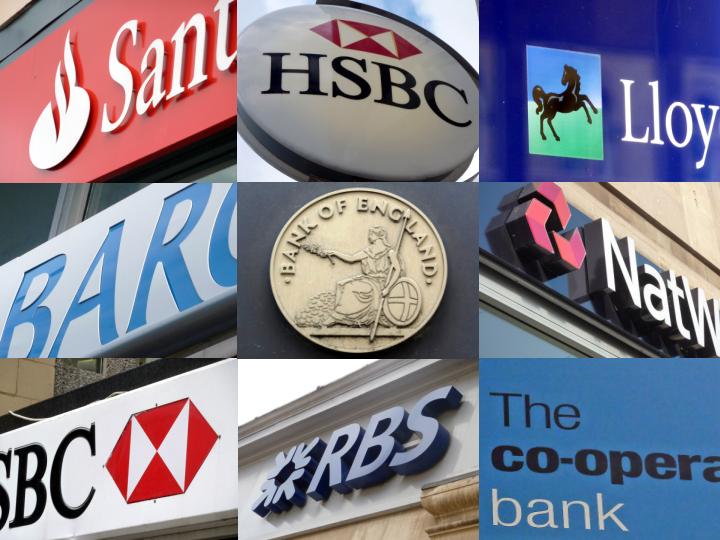 As John reminds us in his blog A seven year emergency we have now seen the official Bank Rate at 0.5 per cent for the past seven years. Understandably many attribute the financial crisis that led to the easing of monetary policy to the lending practices of commercial banks. Consequently, it is important that we better understand (and monitor) banks’ behaviour. Some argue that these practices are affected by the macroeconomic environment, with credit conditions varying across the business cycle. We consider here what recent patterns in interest rates might tell us about credit conditions.
As John reminds us in his blog A seven year emergency we have now seen the official Bank Rate at 0.5 per cent for the past seven years. Understandably many attribute the financial crisis that led to the easing of monetary policy to the lending practices of commercial banks. Consequently, it is important that we better understand (and monitor) banks’ behaviour. Some argue that these practices are affected by the macroeconomic environment, with credit conditions varying across the business cycle. We consider here what recent patterns in interest rates might tell us about credit conditions.
One way in the macroeconomic environment might affect commercial banks’ lending practices is through the difference between banks’ lending rates and the official Bank Rate. We can think of such interest rate differentials – or spreads – as a credit premium. In other words, the greater are commercial borrowing rates relative to the Bank Rate, the greater the credit premium being demanded by banks. On the other hand, the lower the interest rate on borrowing relative to the Bank Rate, the smaller the credit premium.
Some economists argue that interest-rate differentials will fall when the economy is doing well and increase when the economy is doing less well. This is because the probability of default by borrowers is seen as smaller when the macroeconomic environment improves. If this is the case, it will tend to amplify the business cycle, since economic shocks will have larger affects on economic activity.
Consider a positive demand-side shock, such as a rise in consumer confidence, which lowers the propensity of households to save. As the positive shock causes the economy’s aggregate demand to rise, the economy grows. This growth in economic activity might result in lower borrowing rates offered by commercial banks relative to the official Bank Rate. Since savings rates tend to be close to the official Bank Rate, this also means that the cost of borrowing falls relative to the interest rates on savings. This financial effect further stimulates the demand for credit and, as a consequence, aggregate demand and economic activity. It is an example of what economists called the financial accelerator.
Similarly, the financial accelerator means that negative shocks depress economic activity by more than would otherwise be the case. A fall in consumer confidence, for example, would cause economic activity to fall as aggregate demand weakens. This, in turn, causes banks to raise borrowing rates relative to the Bank Rate and savings rates. This further dampens economic activity.
 The chart shows the Bank Rate along with the average unsecured borrowing rate on loans by Monetary Financial Institutions (MFIs) of £10 000. (Secured borrowing is that which is secured against property.) We use this borrowing rate to capture general trends in commercial borrowing rates.
The chart shows the Bank Rate along with the average unsecured borrowing rate on loans by Monetary Financial Institutions (MFIs) of £10 000. (Secured borrowing is that which is secured against property.) We use this borrowing rate to capture general trends in commercial borrowing rates.
As expected, we can see that the borrowing rate is greater than the Bank Rate. In other words, there is a positive interest-rate differential. However, this differential is seen to vary. It falls sharply in the period up to the financial crisis. In early 2002 it was running at 8 percentage points. By summer 2007 the differential had fallen to only 1.7 percentage points. (Click here to download a PowerPoint of the chart.)
The period from 2002 to 2007 was characterised by consistently robust growth. The UK economy grew over this period by about 2.7 per cent per annum. This would certainly fit with the story that economic growth may have contributed to an easing of credit conditions which, in turn, helped to induce growth. Regardless, the falling interest-rate differential points to credit conditions easing.
The story from 2008 changes very quickly as the interest-rate differential increases very sharply. In 2009, as the official Bank Rate was cut to 0.5 per cent, the unsecured borrowing rate climbed to close to 10.5 per cent. Consequently, the interest-rate differential rose to 10 percentage points. Inter-bank lending had dried up with banks concerned that banks would default on loans. The increase in interest rates on lending to the non-bank private sector was stark and evidence of a credit market disruption.
The interest-rate differential has steadily declined since its peak at the end of 2009 as the unsecured borrowing rate has fallen. Hence credit conditions have eased. In fact, in February 2016 our indicative interest rate differential stood at 3.8 percentage points, unchanged from its level in January. This is its lowest level since July 2008. Furthermore, today’s differential is lower than the 6.5 percentage point average over the period from 1997 to 2003, before the differential then went on its pre-crisis fall.
Given concerns about the impact of credit cycles on the macroeconomy we can expect the authorities to keep a very keen eye on credit conditions in the months ahead.
Articles
Bank holds UK interest rates at 0.5% BBC News (17/3/16)
UK’s record low interest rates to continue in 2016 The Guardian, Katie Allen (3/3/16)
Big rise in consumer credit in January BBC News, Brian Milligan (29/2/16)
Household debt binge has no end in sight, says OBR The Telegraph, Szu Ping Chan (17/3/16)
Data
Bankstats (Monetary and Financial Statistics) – Latest Tables Bank of England
Statistical Interactive Database – interest and exchange rates data Bank of England
Questions
- Why would we expect banks’ borrowing rates to be higher than the official Bank Rate?
- What factors might lead to a change in the interest-rate differential between banks’ borrowing rates and the official Bank Rate?
- How would we expect a credit market disruption to affect the interest-rate differential?
- Explain how the financial accelerator affects the change in the size of the economy following a positive demand shock.
- Explain how the financial accelerator affects the change in the size of the economy following a negative demand shock.
- What is the impact of the financial accelerator of the amplitude of the business cycle?
- How might banks’ credit criteria change as the macroeconomic environment changes?
- How might regulators intervene to minimise the effect of the financial accelerator?
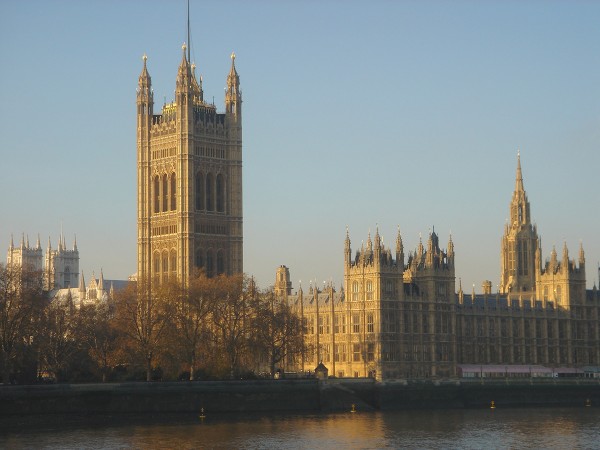 During the 1970s, commentators often referred to the ‘political business cycle’. As William Nordhaus stated in a 1989 paper. “The theory of the political business cycle, which analyzes the interaction of political and economic systems, arose from the obvious facts of life that voters care about the economy while politicians care about power.”
During the 1970s, commentators often referred to the ‘political business cycle’. As William Nordhaus stated in a 1989 paper. “The theory of the political business cycle, which analyzes the interaction of political and economic systems, arose from the obvious facts of life that voters care about the economy while politicians care about power.”
In the past, politicians would use fiscal, and sometimes monetary, policies to manipulate aggregate demand so that the economy was growing strongly at the time of the next election. This often meant doing unpopular things in the first couple of years of office to allow for popular things, such as tax cuts and increased government transfers, as the next election approached. This tended to align the business cycle with the election cycle. The economy would slow in the early years of a parliament and expand rapidly towards the end.
To some extent, this has been the approach since 2010 of first the Coalition and now the Conservative governments. Cuts to government expenditure were made ‘in order to clear up the mess left by the previous government’. At the time it was hoped that, by the next election, the economy would be growing strongly again.
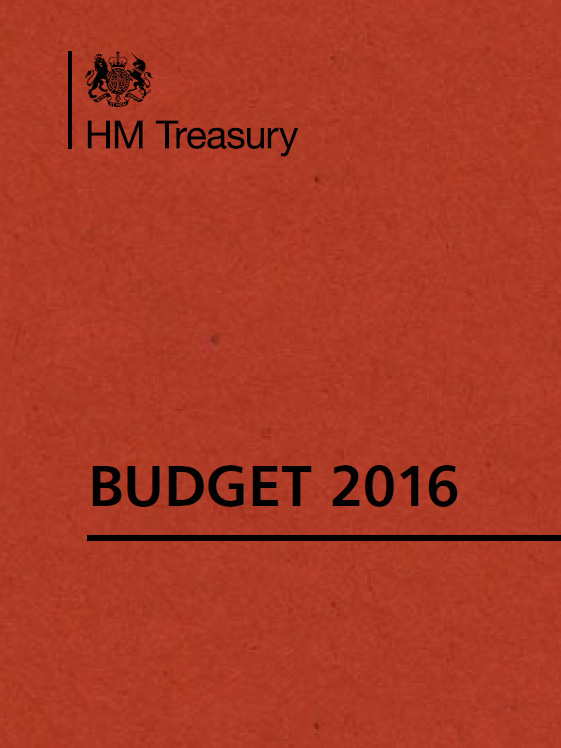 But in adopting a fiscal mandate, the current government could be doing the reverse of previous governments. George Osborne has set the target of a budget surplus by the final year of this parliament (2019–20) and has staked his reputation on achieving it.
But in adopting a fiscal mandate, the current government could be doing the reverse of previous governments. George Osborne has set the target of a budget surplus by the final year of this parliament (2019–20) and has staked his reputation on achieving it.
The problem, as we saw in the blog, Hitting – or missing – the government’s self-imposed fiscal targets is that growth in the economy has slowed and this makes it more difficult to achieve the target of a budget surplus by 2019–20. Given that achieving this target is seen to be more important for his reputation for ‘sound management’ of the public finances than that the economy should be rapidly growing, it is likely that the Chancellor will be dampening aggregate demand in the run-up to the next election. Indeed, in the latest Budget, he announced that specific measures would be taken in 2019–20 to meet the target, including a further £3.5 billion of savings from departmental spending in 2019–20. In the meantime, however, taxes would be cut (such as increasing personal allowances and cutting business rates) and government spending in certain areas would be increased. As the OBR states:
Despite a weaker outlook for the economy and tax revenues, the Chancellor has announced a net tax cut and new spending commitments. But he remains on course for a £10 billion surplus in 2019–20, by rescheduling capital investment, promising other cuts in public services spending and shifting a one-off boost to corporation tax receipts into that year.
But many commentators have doubted that this will be enough to bring a surplus. Indeed Paul Johnson, Director of the Institute for Fiscal Studies, stated on BBC Radio 4’s Today Programme said that “there’s only about a 50:50 shot that he’s going to get there. If things change again, if the OBR downgrades its forecasts again, I don’t think he will be able to get away with anything like this. I think he will be forced to put some proper tax increases in or possibly find yet further proper spending cuts”.
If that is the case, he will be further dampening the economy as the next election approaches. In other words, the government may be doing the reverse of what governments did in the past. Instead of boosting the economy to increase growth at election time, the government may feel forced to make further cuts in government expenditure and/or to raise taxes to meet the fiscal target of a budget surplus.
Articles
Budget 2016: George Osborne hits back at deficit critics BBC News (17/3/16)
George Osborne will have to break his own rules to win the next election Business Insider, Ben Moshinsky (17/3/16)
Osborne Accused of Accounting Tricks to Meet Budget Surplus Goal Bloomberg, Svenja O’Donnell and Robert Hutton (16/3/16)
George Osborne warns more cuts may be needed to hit surplus target Financial Times, Jim Pickard (17/3/16)
6 charts that explain why George Osborne is about to make austerity even worse Independent, Hazel Sheffield (16/3/16)
Budget 2016: Osborne ‘has only 50-50 chance’ of hitting surplus target The Guardian, Heather Stewart and Larry Elliott (17/3/16)
How will Chancellor George Osborne reach his surplus? BBC News, Howard Mustoe (16/3/16)
Osborne’s fiscal illusion exposed as a house of credit cards The Guardian, Larry Elliott (17/3/16)
The Budget’s bottom line: taxes will rise and rise again The Telegraph, Allister Heath (17/3/16)
Reports, analysis and documents
Economic and fiscal outlook – March 2016 Office for Budget Responsibility (16/3/16)
Budget 2016: documents HM Treasury (16/3/16)
Budget 2016 Institute for Fiscal Studies (17/3/16)
Questions
- Explain the fiscal mandate of the Conservative government.
- Does sticking to targets for public-sector deficits and debt necessarily involve dampening aggregate demand as an election approaches? Explain.
- For what reasons may the Chancellor not hit his target of a public-sector surplus by 2019–20?
- Compare the advantages and disadvantages of a rules-based fiscal policy and one based on discretion.
 It doesn’t seem long ago that we were looking at the prospects of Brazil for hosting the Football World Cup. Now, we turn to the same economy, but this time for the Olympics. It is often the case that hosting big global sporting events can give a boost to the host nation, but is Brazil prepared for it? Did the World Cup bring the expected economic boosts? Some argue that the Olympics is just what Brazil needs, but others suggest it will only worsen the economic situation in the world’s seventh largest economy.
It doesn’t seem long ago that we were looking at the prospects of Brazil for hosting the Football World Cup. Now, we turn to the same economy, but this time for the Olympics. It is often the case that hosting big global sporting events can give a boost to the host nation, but is Brazil prepared for it? Did the World Cup bring the expected economic boosts? Some argue that the Olympics is just what Brazil needs, but others suggest it will only worsen the economic situation in the world’s seventh largest economy.
Brazil’s economic performance in the past year was not good. In fact, it was one of the worst performing nations of any major economy, with GDP falling by 3%. This is a very different country from the one that was awarded this biggest of sporting events. Despite these difficult times, Brazil’s government maintains that the country is ready and that the games will be ‘spectacular’.
Key to hosting a sporting event such as the Olympics is the infrastructure investment and as a key component of aggregate demand, this should be a stimulant for growth and job creation. However, with the economy still struggling, many are concerned that the infrastructure won’t be in place in time.
Other benefits from this should be the boost to growth driven by athletes and spectators coming from around the globe, buying tickets, memorabilia, accommodation, food and other items that tourists tend to buy. A multiplier effect should be seen and according to research has the potential to create significant benefits for the whole economy and not just the local regions where events take place. You can look at similar analysis in blogs written about Tokyo: 2020 Tokyo Olympics and London: The London Olympics legacy: a cost–benefit analysis and Does hosting the Olympics Games increase economic growth?
But, is this really likely to happen, especially given the somewhat lacklustre boost that the Brazil World Cup gave to the economy? The following articles consider this.
Rio 2016: Can Games bounce back from Brazil economic woes? BBC News, Bill Wilson (11/03/16)
Does hosting the Olympics actually pay off? It’s the economy, Binyamin Applebaum (5/08/14)
Rio Olympics no help to Brazil economy based on World Cup Bloomberg, Raymond Colitt (16/01/15)
The economic impact of Brazil’s 2014 World Cup and 2016 Olympics Saxo Group, Trading Floor, Sverrir Sverrisson (27/08/12)
Special Interview: Cost–benefit analysis of hosting the World Cup, Olympics Al Arabiya, Ricardo Guerra (3/7/14)
Questions
- How might you carry out a cost–benefit analysis to decide whether to host a big sporting event?
- Are there any externalities that might result from hosting the Olympics? How easy is it to estimate their monetary value? Should this be taken into account by a country when making a decision?
- Why might there be a boost to aggregate demand prior to the Olympics?
- Why might there be a multiplier effect when a nation hosts the Olympics or another sporting event?
- Might there be benefits to Brazil’s neighbours from its hosting the Olympics?
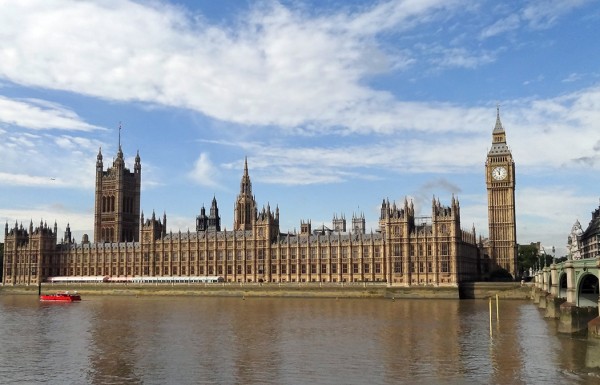 On election to office in May 2015, the UK’s Conservative government set new fiscal targets. These were set out in an updated Charter for Budget Responsibility. As Box 12.3 in Essentials of Economics (7th edition) states:
On election to office in May 2015, the UK’s Conservative government set new fiscal targets. These were set out in an updated Charter for Budget Responsibility. As Box 12.3 in Essentials of Economics (7th edition) states:
The new fiscal mandate set a target for achieving a surplus on public-sector net borrowing by the end of 2019/20. More controversially, government should then target a surplus in each subsequent year unless real GDP growth falls below 1 per cent … Meanwhile, the revised supplementary target for public-sector debt was for the net debt-to-GDP ratio to fall each year from 2015/16 to 2019/20.
What is more, the Charter requires the government to set a cap on welfare spending over a five-year period. 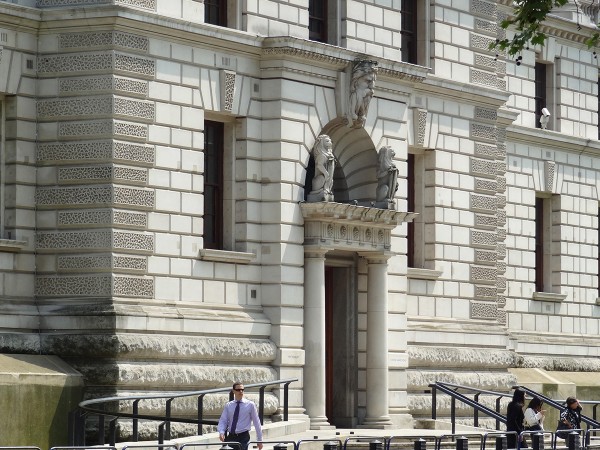 Such spending includes spending on pensions, tax credits, child benefit and unemployment benefit. In July 2015 the Chancellor set this cap at £115bn for 2016/17, a reduction of £12bn.
Such spending includes spending on pensions, tax credits, child benefit and unemployment benefit. In July 2015 the Chancellor set this cap at £115bn for 2016/17, a reduction of £12bn.
Whether or not such a tight fiscal target is desirable, the government has been missing the target. In November last year, the Chancellor had to backtrack on his plans to make substantial reductions in tax credits and as a result the welfare cap has been breached, as the following table from page 5 of the December 2015 House of Commons briefing paper shows.

Also, with the slowing of economic growth, the Chancellor has stated that he will miss the requirement for a fall in the net debt-to-GDP ratio unless further cuts in government spending are made, equivalent to 50p in every £100.
But, if the economy is slowing, is it right to cut government expenditure? In other words, should there be some discretion in fiscal policy to respond to economic circumstances? There are two issues here. The first is whether the resulting cut in aggregate demand will be detrimental to growth. The second is who will bear the cost of such cuts. Critics of the government claim that it will largely the poor who will lose if the cuts are made mainly from benefits.
The articles below examine the public finances, the difficulties George Osborne has been facing in sticking to his fiscal mandate and the options open to him.
Articles
Budget 2016: Osborne’s economic fitness regime BBC News, Andy Verity (14/3/16)
Budget 2016: George Osborne fuels speculation of nasty shocks The Guardian, Larry Elliott and Anushka Asthana (14/3/16)
Official publications
Charter for Budget Responsibility: Summer Budget 2015 update HM Treasury (July 2015)
OBR publications, including ‘Economic and fiscal outlook’ and ‘Fiscal sustainability report’ Office for Budget Responsibility
Questions
- Outline the main points of the Charter for Budget Responsibility (CBR).
- What are the arguments for sticking to fiscal rules, such as those in the CBR?
- What are the arguments for using discretion to adjust fiscal policy as economic circumstances change?
- Compare the Conservative government’s fiscal mandate with the newly announced approach to fiscal policy of the Labour opposition?
- How does the Labour Party’s new approach differ from the Golden Rule followed by Gordon Brown as Chancellor in the Labour government from 1997 to 2007?
- What factors will determine whether or not the government will return to meeting the rules set out in the Charter for Budget Responsibility?
 Project Syndicate is an organisation which produces articles on a range of economic, political and social topics written by eminent scholars, political and business leaders, policymakers and civic activists. It then makes these available to news media in more than 150 countries. Here we look at four such articles which assess the outlook for the European and global economies and even that of capitalism itself.
Project Syndicate is an organisation which produces articles on a range of economic, political and social topics written by eminent scholars, political and business leaders, policymakers and civic activists. It then makes these available to news media in more than 150 countries. Here we look at four such articles which assess the outlook for the European and global economies and even that of capitalism itself. The Hans-Werner Sinn article looks at some of the consequences of the huge amount of money created through QE and continuing to be created in the eurozone. Although it has not boosted consumption and investment nearly as much as desired, it has caused bubbles in various asset markets. For example, the property market has soared in many countries:
The Hans-Werner Sinn article looks at some of the consequences of the huge amount of money created through QE and continuing to be created in the eurozone. Although it has not boosted consumption and investment nearly as much as desired, it has caused bubbles in various asset markets. For example, the property market has soared in many countries: Without such drastic measures he sees consumer and business pessimism (see chart) undermining recovery and making the eurozone vulnerable to global shocks, such as further weakening in China. (Click here for a PowerPoint of the chart.)
Without such drastic measures he sees consumer and business pessimism (see chart) undermining recovery and making the eurozone vulnerable to global shocks, such as further weakening in China. (Click here for a PowerPoint of the chart.)






